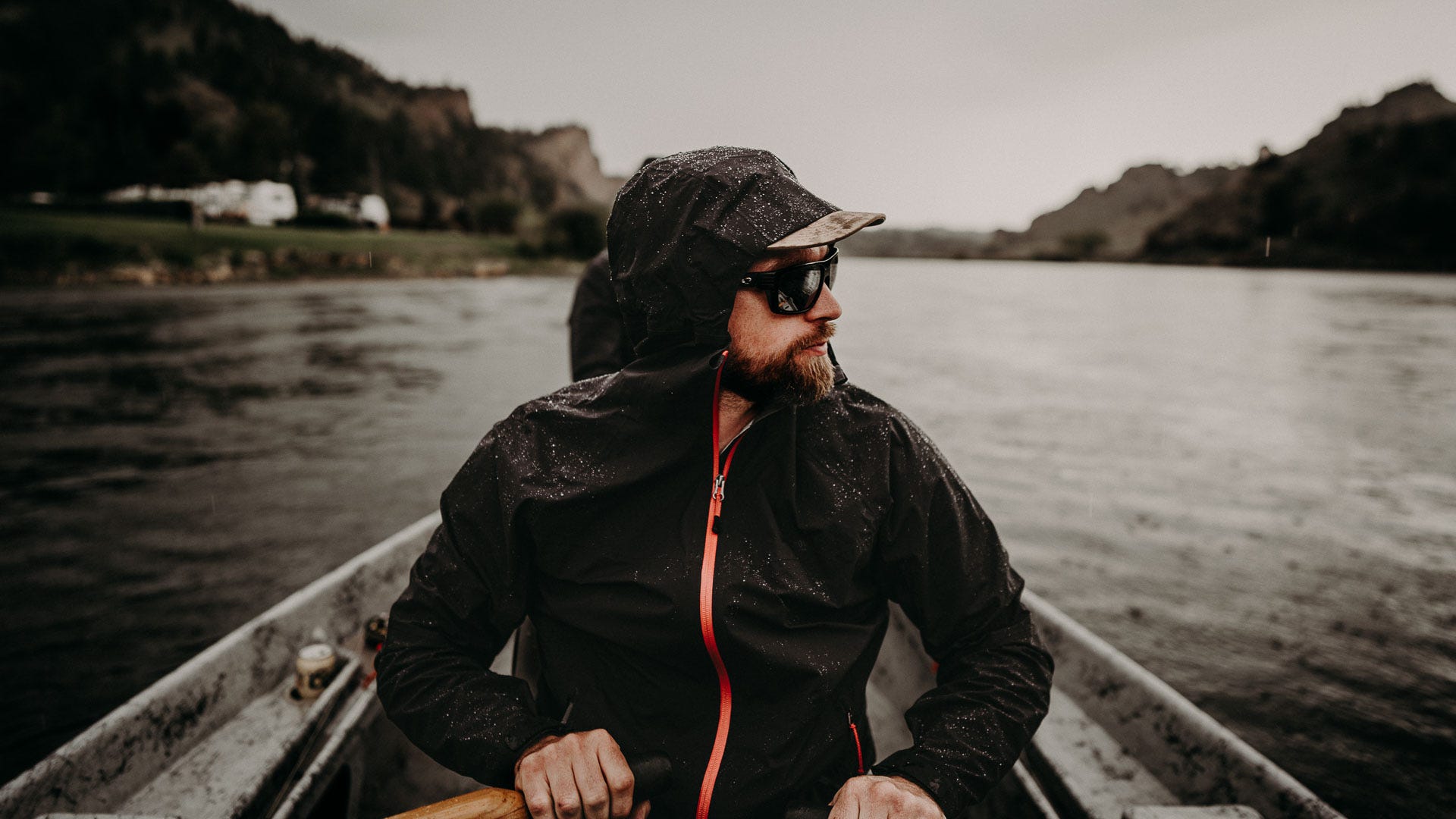Are All Good Shells Goretex? Why Gore-Tex is not the Only Good Option
The SR3-Layer Rain Shell

Goretex is a patented material, and one of the first materials of its time to be flexible, breathable and waterproof all at the same time. Before that people were either waxing their canvas or wearing plastic ponchos. Our 3-Layer SR3 Fabric (made in Japan) is based off the same principle, creating a fabric that not only keeps the water out, but breathes enough to keep you dry on the inside as well. We'll explain how our shell is different than a poncho, what a 3-layer shell means, and how a fabric is tested for waterproofness. Full disclaimer, our shells are not made from Gore-tex material, just like the tissues you buy from the supermarket might not be Kleenex (a brand). So if you are looking for Gore-tex products specifically, you might try looking at some of our competitors like Arc'teryx or Rab.
Other brands like Moutain Hardware and Patagonia have their own Patented waterproof materials such as H2No® and Ascentshell. Which are all on the same playing field as Goretex and our SR3 Fabric.
What makes a rain shell different from those yellow ponchos worn by tourists at the base of Niagara Falls?
Sure, the plastic material of a poncho is impermeable to water. But it won’t keep you from getting wet from the inside. A poncho (or cheaply made rain jacket) is like a greenhouse that holds on to moisture and heat. This greenhouse effect is good for plants, but not for your pits.
The brilliance behind a rain shell, like our SR3 Jacket, is in the engineering. Water is eliminated from the equation, from elements both outside and within.
Hiking, hunting, BC skiing/split-boarding are all activities that burn a ton of calories. When you burn calories, you dump heat, and that heat needs somewhere to go (think the lid on the pot of boiling water or water on your walls after a hot shower). If your jacket doesn’t breathe, that heat will condense the air into water. In turn working against the whole idea behind a shell in the first place, to stay dry.


Our shell (and others like it) is composed of three layers. The Face Fabric is the outermost layer made of a woven nylon, giving the jacket durability and aesthetic appeal.
Beyond that is the magic maker, technically speaking, the membrane. The membrane (much like our skin is a membrane) contains tiny, I mean like as small as a dinosaur brain, pore-like holes that let heat and vapor escape.
And the third layer (the innermost layer) is a nylon mesh designed to make the jacket comfortable and wearable, like your go-to Hawaiian shirt.
This fabric is then tested for its water repellency (spray test), water resistance (water column test), and its breathability. All these tests take place in a controlled lab environment with standardized equipment. The spray test simulates a consistent rainfall to test the face fabric’s (DWR coated) ability to shed water without absorbing it.
Water resistance tests determine how the fabric holds up under pressure. The test measures the amount of pressure it takes to push water through the fabric. Imagine covering the end of your hose with the fabric, wrapping a rubber band around it to seal it, then slowly turning up the pressure until water starts to drip out.
The SR3 shell is rated at 15,000mm (water resistance test), meaning it takes 15,000mm of water suspended in a 1x1 square tube over the fabric before a leak occurs. A jacket rated to 5k would be sufficient for stomping around the local ski hill (ours include Showdown Montana, Teton Pass, Great Divide). 10k and up provides sufficient protection for anyone spending time in remote areas (The Bob Marshall Wilderness, Glacier National Park, Floating the Smith River, etc.).






To give you more of an idea, we tested the SR3 Shell in the mountains, under a cascading waterfall (attempt at your own risk). And the results were conclusive, dry as your skin in the middle of winter.
As far as breathability goes the SR3 is rated to 15,000g. The way this is measured is by placing a piece of fabric over a water filled mason jar, screwing the lid on tight. The cup is inverted, and the fabric is placed in contact with a desiccant (a material that absorbs water, like the packs in your jerky that says do not eat). After a 24hrs the water absorbed by the desiccant is measured.
All this is to say that any rating between 10 and 20,000 is moderately breathable. Anything above 20k is highly breathable. It’s all a tradeoff. The more breathable the fabric, the more heat lost. This translates to potentially more layers, and looking a lot like the Michelin Man.
If you are still with me, there is another important piece to any good shell, seam taping. Seam taping is heat applied to all the seams where the needle and thread passed through (making small but not insignificant holes). Rest assured; our SR3 Jacket is fully taped throughout.
To try and land this backflip, this stuff is complicated. And like with anything it is all a trade-off. How much do you want to spend, what are you going to be using it for, will it be good enough to get you home for dinner? We believe the SR3 can do it all, from the thru hike to jet boat and back. The whole idea behind our SR3 Shell, is that it can get the job done, and it won’t lighten your wallet, just your backpack.
- SR3 Highlights
- Weighs in at 0.6 lbs
- 3 Layer Shell
- Roomy Fit for layering
- Resists Waterfalls and Rocky Mountain Fronts
- Breathability - like a fish breathes under water
- Recommended uses: hiking, hunting, alaska fishing trips, bird-watching, BC skiing/splitboarding, climbing, daily defense against inclement weather, etc. (Not recommended for scuba diving or space travel)






